Radical Red Bull puts champions on the front foot in 2024 F1 pre-season testing
All eyes were on last year’s champions as the teams took to the track for pre-season testing. Chris Medland, reporting from Bahrain, sees ominous signs that a Red Bull design gamble might pay off
DPPI
Tech focus
A Sharp intake of air
Aerodynamicist Chris Bull takes us through Red Bull’s cooling system
It would be humbling for Mercedes if, just as it abandoned its slim sidepod concept, Red Bull perfected it. That’s not quite what has happened, but Red Bull is using a similar theory in its car and applying it differently.
With two narrow slits — one vertical and one horizontal — Red Bull’s air intakes are barely visible, hinting at advanced cooling and intricate ducting underneath the bodywork. With these thin cooling inlets along the inner and upper legality extremities, there’s now a wider, taller channel ahead of the sidepods which is filled with high-pressure air channelling downwards and towards the rear.
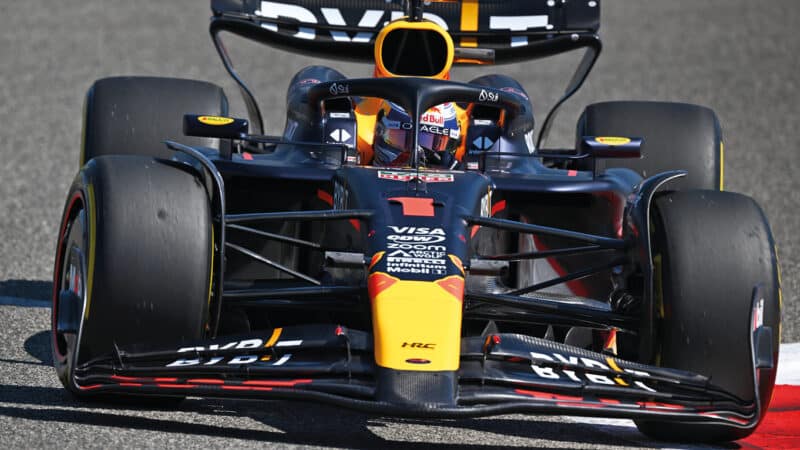
Red Bull’s small intakes have been compared to those of the Mercedes W14
This acts as a curtain between the sidepod and front wheel wake, which is naturally pulled inwards where it would reduce the downforce generated. The larger channel, combined with the physical barrier of the sidepods should be more effective at keeping the wake at bay.
Once funnelled to the rear, airflow will also help prevent the rear wheel wake from disrupting the underbody flow.
New air inlets by the cockpit provide additional cooling air, allowing the sidepod inlets to be that bit smaller.
If you win 21 out of 22 races in a season, it’s no great surprise that you are going to be the centre of attention when the next car off your impressive production line hits the track.
Red Bull had plenty of reasons to be in the limelight this winter, but the RB20 deserved to be in its own right given the step away from its predecessor that it is. Last year’s all-conquering car appeared to be the inspiration for a number of teams during launch season, but the Red Bull that followed it features an even more radical sidepod and engine cover solution.
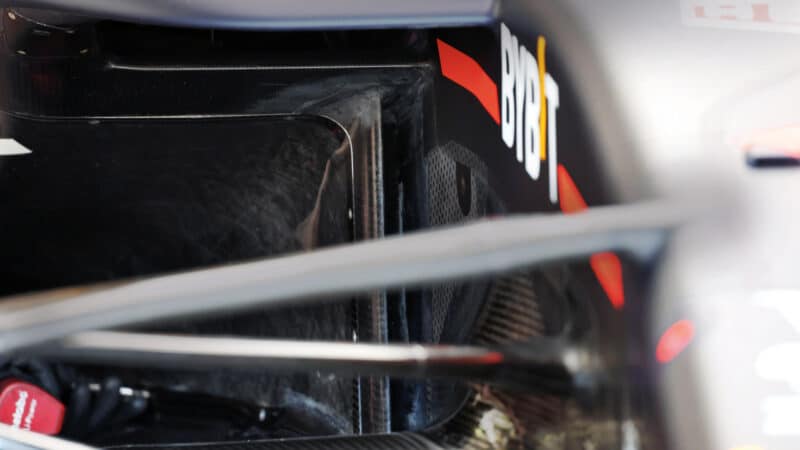
Narrow horizontal and vertical inlets must mean novel ducting beneath
Eric Alonso/DPPI
That led to some apprehension heading into the opening day of testing, not only from rivals who might be worried about Red Bull potentially pulling further away rather than being reined in, but also from the team itself as it had plenty to learn about how its new design would perform.
“I think it’s a risk, because otherwise we wouldn’t be as nervous before the test!” technical director Pierre Waché told Motor Sport in Bahrain while the car was lapping. “We took some risks by completely changing the concept. I would say the overall aerodynamic concept doesn’t change fundamentally, and it’s going in the same direction, it’s more the cooling concept and how to achieve even more that was risky.
“If you don’t take risks then somebody else will take them and beat you”
“Strategically you have to take some risks and you have to move on. The problem in this business is – because it’s only relative performance – if you don’t progress, you’ll regress. If you don’t take risks then somebody else will take them and beat you. And even more so now, in the era of the budget cap, because you can’t change so much during the year, the big ticket you have is at the beginning of the year.
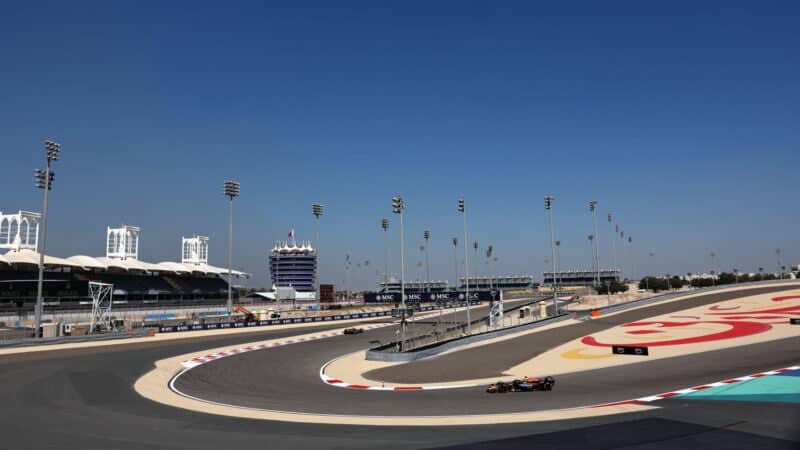
The new Red Bull was astoundingly fast out of low-speed corners – something the team had focused on recently
Alamy Live News
“[This car] is a big risk, yes, maybe we can take less. With hindsight, yes, we could, but we took it and it’s an investment for the future. You invest for 2025 as well because 2026 will be a big demand. That’s how we think about it. It’s better to bet big now and afterwards you have two years to fix it, plus it gives you a little bit more resource and time for 2026 later on.”
The initial signs are very much that the risk has paid off from Red Bull’s point of view, with Max Verstappen’s opening day particularly impressive. The car was nervous on-throttle during the Dutchman’s initial runs, but set-up tweaks soon seemed to find a much sweeter spot that allowed him to be far more aggressive as the morning wore on.
By the afternoon – with Verstappen going some 1.1sec quicker than the rest of the field on the opening day – the performance was so notably different accelerating out of the tricky Turn 10 that a former racing driver stood next to me said it looked like the car “is being shot out of a cannon”.
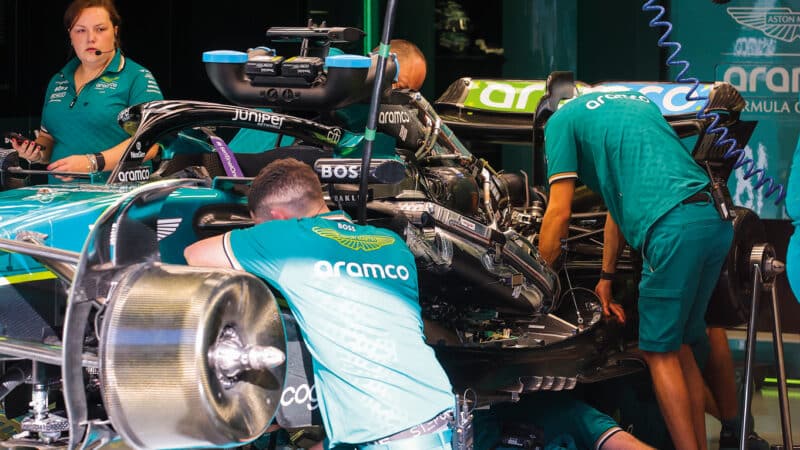
Aston’s AMR24 looks promising
DPPI
The area Waché said Red Bull had focused on the most last season? Low speed corners. And yet, despite that strong opening salvo, there have also been plenty of hints as to exactly why Red Bull had to take the risk with the RB20.
By the end of 2023, Ferrari was beating Red Bull to pole position more often than not, and Charles Leclerc quickly responded with a show of pace early on the second day. Verstappen had gone so far clear on day one during the best track conditions in the evening, but on a hotter and dirtier surface on Thursday morning, Leclerc was just 0.4sec off.
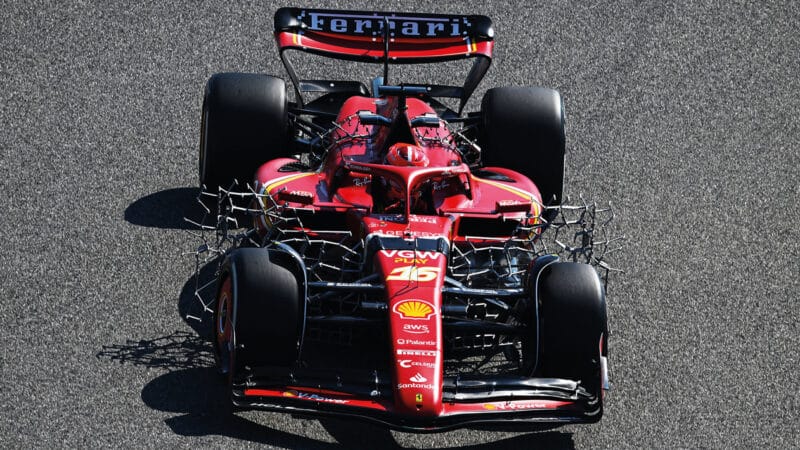
Charles Leclerc’s pace picked up
That shouldn’t have come as a huge surprise, as raw pace hasn’t been the Scuderia’s problem in recent years. The priority with the 2024 car is being able to translate that into race performance without overusing the delicate Pirelli tyres; something Red Bull has excelled at. A conversation between Carlos Sainz Sr and Pirelli motor sport boss Mario Isola may well have included professional topics on top of personal ones.
McLaren was another team regularly offering a challenge to Red Bull in the second part of last year, and appears to have made similar progress to Ferrari. The encouraging part from McLaren’s point of view is team principal Andrea Stella’s insistence that there are a number of development items in the pipeline to provide another step in the early rounds, as the 2024 car appears a solid platform that should keep it in the conversation amid the chasing pack.
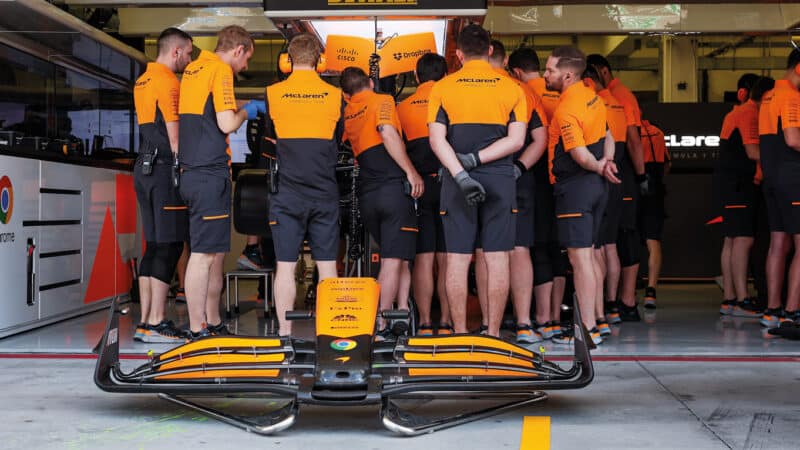
Progress at McLaren
DPPI
After so much focus on Lewis Hamilton’s decision to swap Mercedes for Ferrari in 2025, there’s the potential for a tricky relationship between the two if the W15 is not more competitive than its predecessor. Mercedes’ early pace might have been a concern simply based on lap times, but there were other areas of encouragement.
“George Russell carried out a race simulation on the first day of the test”
Major changes to the design had been made with driver confidence in mind, as James Allison wants to provide Hamilton and George Russell with a more stable car. It received good feedback from Russell, with the Brit even carrying out a race simulation on the first day of the test. In the past, that’s always been a sign of a confident Mercedes.
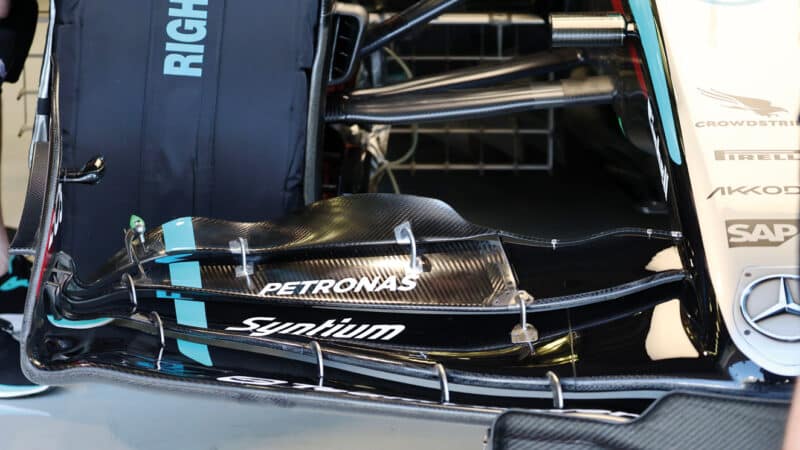
Chris Bull, is a former Brawn, Mercedes and Alpine aerodynamicist who now runs the Pro-Aero consultancy
Twelve months ago, the Aston Martin was the star of testing behind Red Bull, emerging as the nearest challenger. While there’s been nothing to suggest a repeat from the AMR24, the first car from the Silverstone-based team’s new factory certainly shows signs of maintaining its position as a podium contender, remaining on the respective radars at Ferrari, McLaren and Mercedes.
Yet the test has provided a sense of déjà vu in the paddock, with Red Bull appearing to have retained that breathing space ahead of the chasing pack. Whether it has or whether the gaps have changed will of course play out over the coming months. And in turn that will make clear if Red Bull’s gamble has paid off.
Tech focus
Playing on the wing
Mercedes’ front end drew attention in Bahrain – but it’s compliant with technical regulations, says Chris Bull
Mercedes showed that it still has its nose in front when it comes to creative design. The rear element of its front wing appears to end abruptly, until you look closer to see the narrow strip of carbon fibre linking it to the nose of the car.
That technically meets the regulation requiring all elements to run the full length of the front wing — but ingeniously offers the advantage of an element that doesn’t.
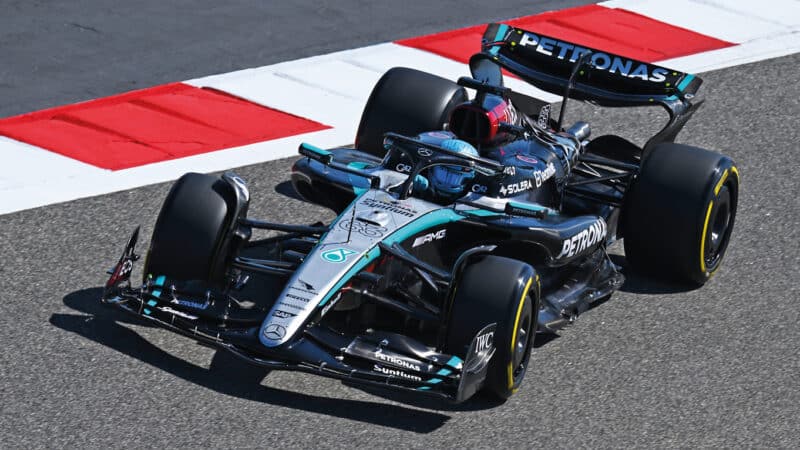
This section of carbon fibre connects the top flap to the W15’s nosecone
Before current regs were introduced in 2022, all cars had elements that stopped 250mm short of the nose (the maximum allowable) that generated what was called a Y250 vortex of highly charged airflows that spiralled either side of the chassis.These vortices outwashed the lower part of the front tyre wake and created downwash to improve the flow of energy to the floor.
Teams have been trying to recover wheel wake control since 2022, and Mercedes is likely attempting to create a ‘shedding edge’ to generate these vortices.
The risk is that it pulls in air from above, disrupting flow to the underbody where most downforce is generated, so it’s not a win-win.